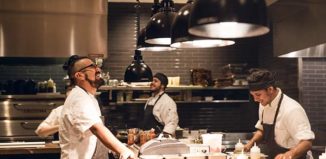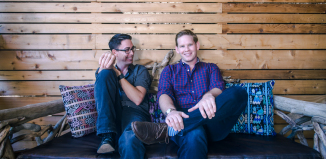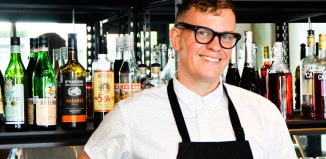By Sarah Hopwood
City-of-festivals Austin got a new one this past weekend: the first-ever Austin Fermentation Festival showcased some of our city’s best restaurants and the famed godfather of fermentation, Sandor Katz. Fermentation is possibly the nerdiest corner of the culinary world, and food nerds united and shared their recipes, tips and tricks – and even their starters and kombucha mothers – during the day-long event of free demonstrations on how to make all of your favorite foods through what Katz calls the “transformative action of microorganisms.”
Fermented favorites like kimchi, cheese, lacto-fermented vegetables, pickles, and sourdough breads all undergo a series of chemical breakdowns activated by substances such as bacteria, yeast, and other microorganisms to achieve a healthy and delicious end product. People were excitedly chatting about how long they’ve had their bread starters and clutching copies of Wild Fermentation, Katz’s first book detailing the science and recipes to make everything from kimchi to Champagne. The room teemed with hundreds of pairs of eyes constantly scanning the room for a chance sighting and book signing by the tall, charming author.
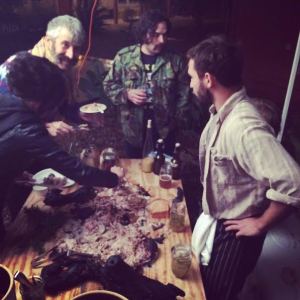
Photography by Sarah Hopwood
A brief intermission led to an enchanted evening filled with top-of-the-line restaurants putting their best fermented foods forward at East Austin’s HausBar event space. Among the many talents sampling tasty treats were Lenoir, Salt and Time, La V, Qui, Dai Due, and one of the city’s hottest up-and-comers, Mum Foods. Mum is run by a young couple living on an East Austin farm working hard to express their passion for farm-to-table food and sustainable eating. For the last six months, they’ve been offering their long-smoked brisket, rich brioche, pickles, and vinegars at the Cedar Park Farmers Market and Mueller Farmers Market.
Lenoir featured a beautiful sun-dried, lacto-fermented six-month-aged eggplant miso that pitted it against the only other miso served at the event: Dai Due’s Venison Broth Purple Whole Pea Miso with Bluegill Fish Sauce. Simply put, the venison broth is made with venison bones, then seasoned by a fish sauce made from a fresh water bluegill caught and fermented by Dai Due owner and chef Jesse Griffith. This seasoned broth is then poured over a purple, whole pea miso that has been fermented for 14 months. Mum Foods laid out an entire Yorkshire Ossabaw smoked pig, one of a select few pigs raised this year by Austin-based Organicare Farms. Mum also presented three different house-made vinegars, pickled watermelon radish, and pickled green beans, and two house-made mustards.

Photography by Sarah Hopwood
The night was peppered with drinks provided by Austin Eastciders who showcased an experimental brisket cider, fermented for weeks on Texas beef brisket. Its smoky crispness got the attention of many in the crowd. Hochstadter’s Slow and Low Rock and Rye made an appearance in the classic old-fashioned with a macerated blackberry twist. Other boozy beverages included warmed hard cider made from forty varietals of English cider apples and pure wild fermentation. Spicewood Vineyards put the spotlight on pure Texas estate wine, featuring a Tempranillo style wine made with 100% pure Texan grapes.
Toward the end of the evening, Katz and I pulled off to a corner of the party after the feeding frenzy slowed. Katz moved from New York City to rural Cannon County Tennessee in 1993 to be part of a queer farming community. He has written several books, including Wild Fermentation (2003) and The Art of Fermentation (2012), and recently won the 2013 James Beard Foundation Award for Reference and Scholarship. He travels the country giving demonstrations and hosting workshops on fermented foods. He was gracious enough to give me some insight into how he came to the world of fermentation and his experience as a gay man on the culinary scene.
It’s so great to talk with you. You’re quite the celebrity in the culinary world! I went to pastry school in Seattle and my bread instructor passed out Wild Fermentation to everyone in the class and told us that this book was now our bible.
Wow, that’s so funny. At the time I just didn’t know much about bread. I know a limited amount about all of these things. I’m a generalist. I feel like that’s my strength but that’s also my limitation.
What first piqued your interest in fermentation?
As a kid growing up in New York City, I’d always been drawn to sour pickles and to the flavors of fermentation, particularly the lactic acid flavor. But really twenty-one years ago I moved from New York City to rural Tennessee to this queer community and I got involved in gardening. For a naive city kid the idea that all the cabbage is ready at the same time, all the radish is ready at the same time, I just never really thought about that. And so I was like, “I better learn how to make sauerkraut because we have all of this cabbage ready at the same time!” The practical considerations have driven fermentation practices everywhere, and just the practicality was what first got me learning how to ferment things.
Did you ever get interested in the fermentation of the bread process?
Yeah, sure. Once I got involved in sauerkraut I got interested in all things fermented. I was making yogurt, I was making cheese, I started a sourdough, I was making bread, I learned to make miso that first year, so yeah, I was baking bread for sure. But books about sourdough like Laurel’s Kitchen Bread Book tell you to throw away half of it. I was ignoring that. They never explain why! I was like, “Well I’m not throwing food away!” This took me twenty years to figure out, but when you throw away half of it and add more flour and water, you’re lowering the acidity and that makes it more hospitable to yeast. You can actually make bread that rises much better and isn’t as sour if you use a smaller proportion of starter and a larger proportion of water.
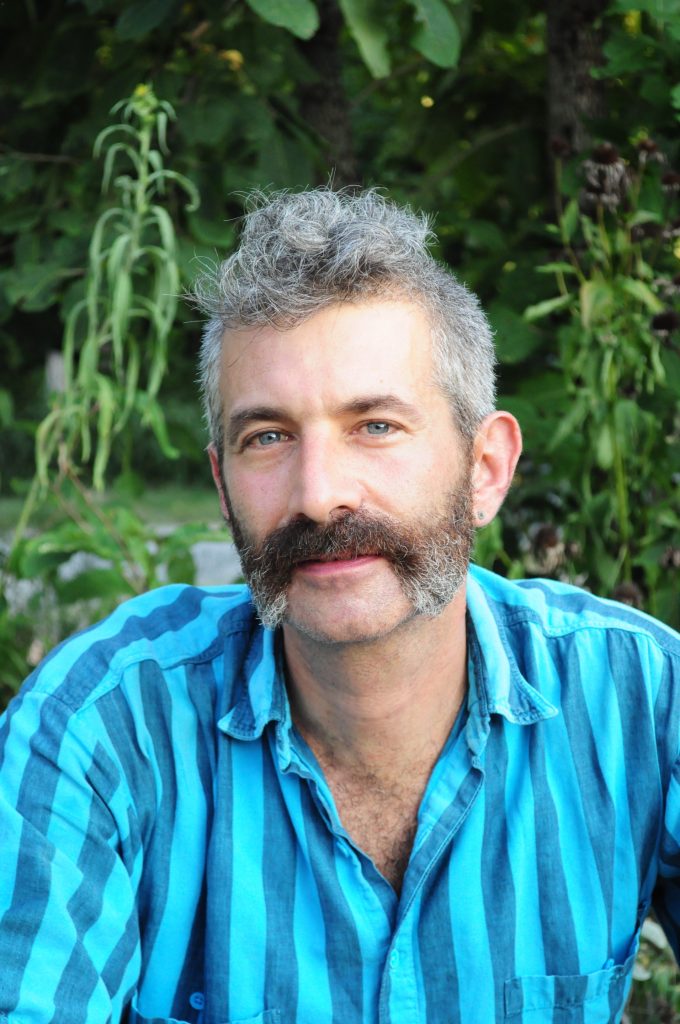
Sandor Katz promotional photo
Were you a writer before you found your love for fermentation? Did you ever expect such success as a writer? How did it all happen?
I was obsessed with fermentation for ten years before it occurred to me to write about it. When I had the idea to write about it, first I had this little zine, and as soon as I wrote that I was like, “Well, this would be a great thing to write a book about.!” Even when I was writing my little zine it made me read things. I had never really delved into literature to learn about Louis Pasteur or 18th-century conceptions of fermentation, but it turned out that it was extremely interesting and there were a lot of stories to write.
How has it been being queer in a traditionally very straight male world?
My interest in fermentation developed in this queer community where I lived. I never worked in a kitchen–I waited tables for maybe four months once, but now that I have entrée in that world, I’m getting a bit of a sense of what a straight macho world that is. But that’s not where I learned about fermentation and that wasn’t my experience until chefs started being interested in my books. So the whole straight macho chef world was irrelevant to my experience.
How did you find your community in Tennessee?
Kind of randomly. I met a guy at Mardis Gras in New Orleans in 1992, and he was staying at a house with some people from the community. I ended up hanging out with some of them during the weekend. Then he suggested I come there and meet him at this event they were having.
What a beautiful and pure way to come into the world of cooking!
I feel lucky that I was in that situation. I could indulge this obsession, if I had still been working at my office in New York, I just wouldn’t have had time. It was just a confluence of factors that enabled me to totally indulge this obsession and learn a lot about fermentation.
Look at what it’s brought you. People are falling over themselves to talk to you!
I feel very lucky!



















